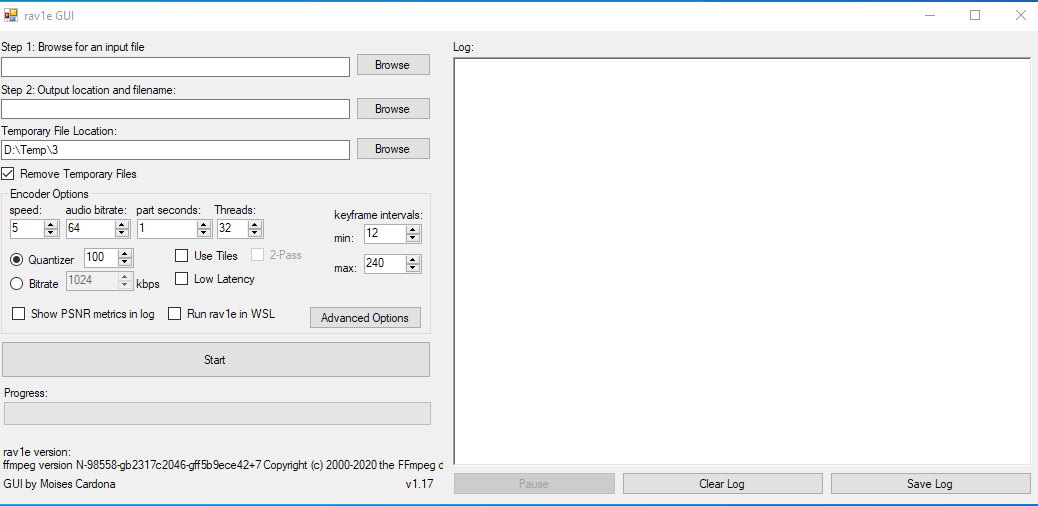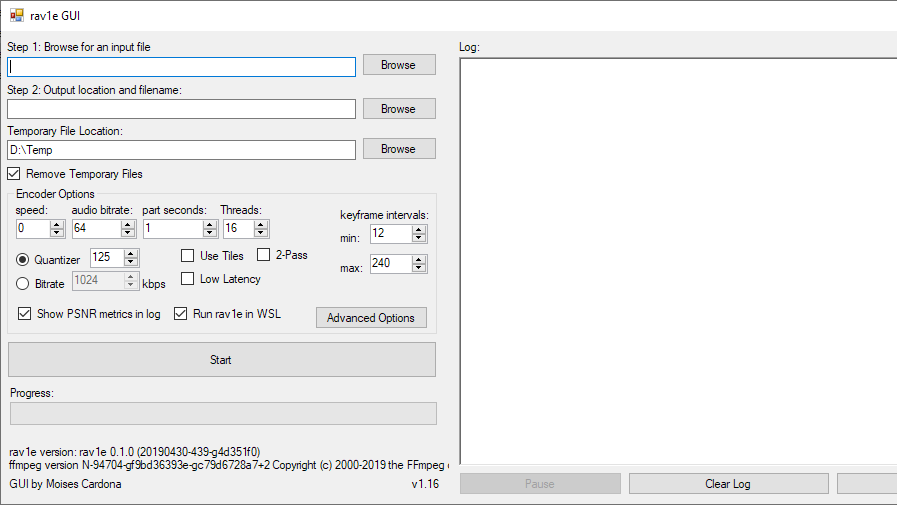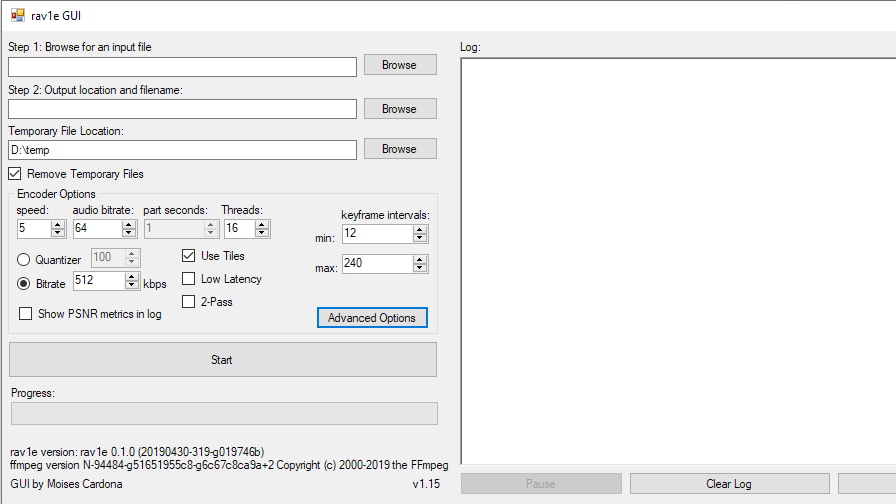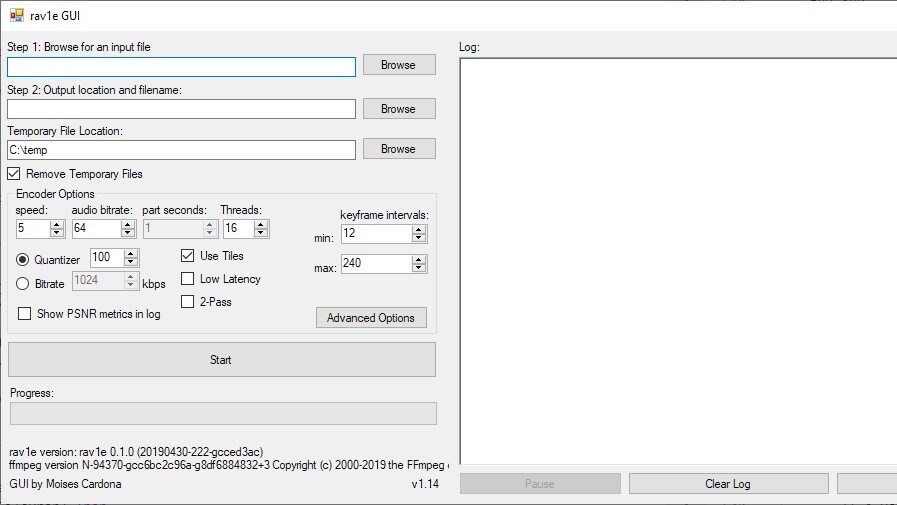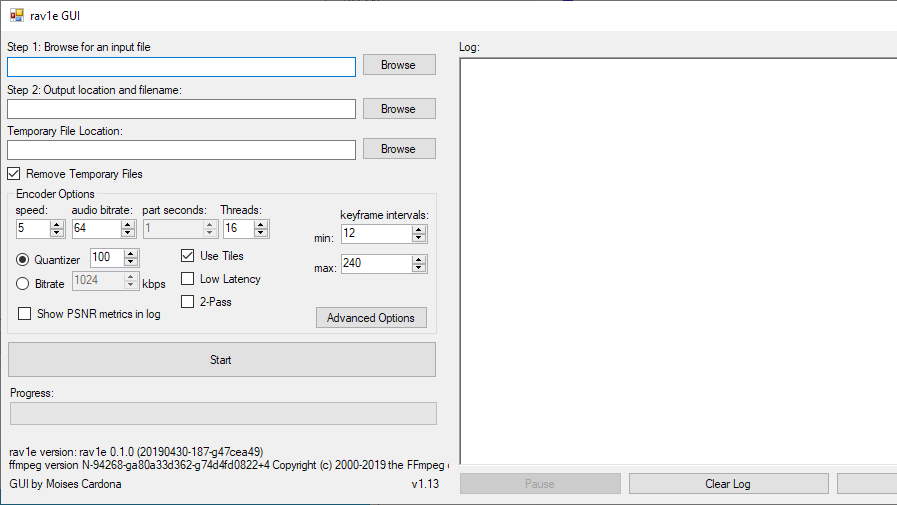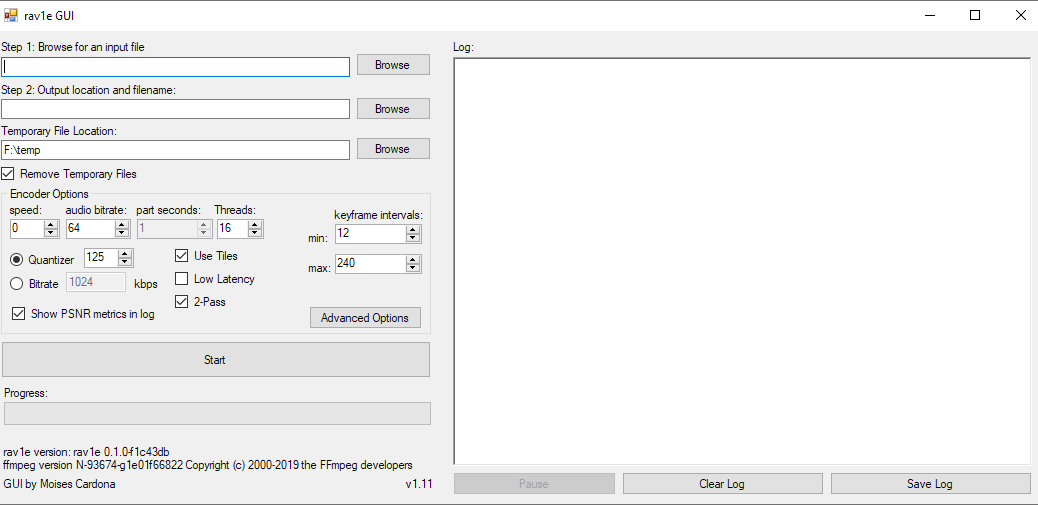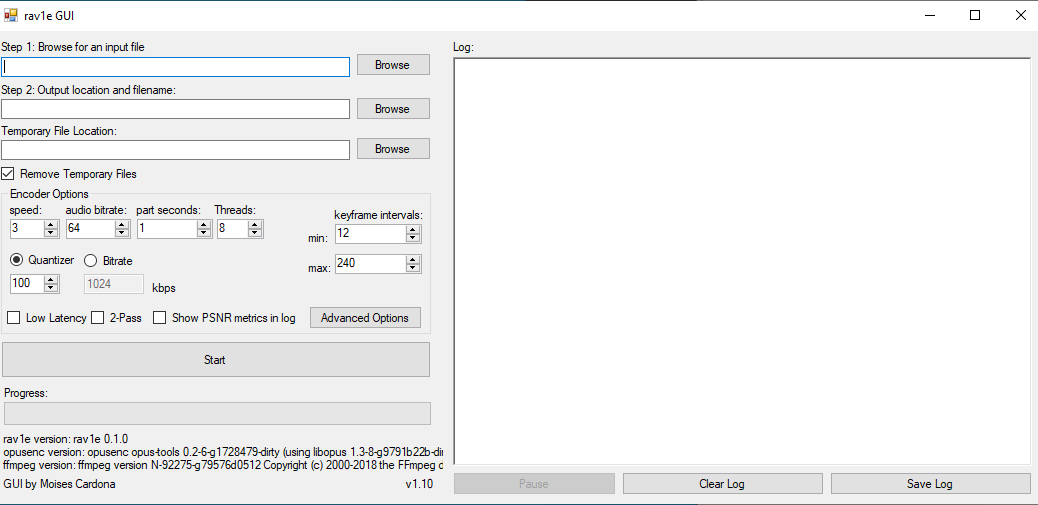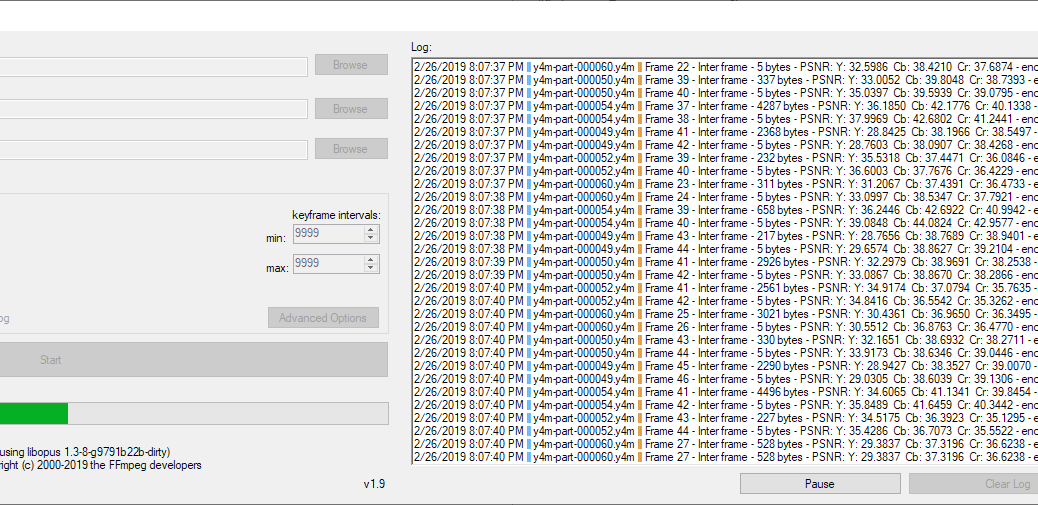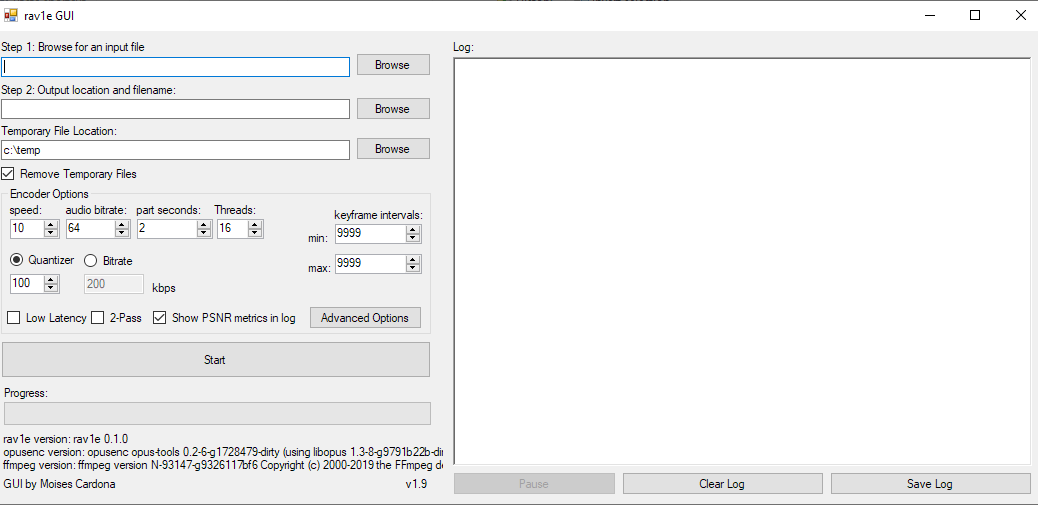rav1e GUI v1.17 released!
Hi everyone, Today, I have released rav1e GUI v1.17: This new version will encode files without producing huge .y4m temporary files. It also disables 2-pass encoding in quantizer mode, which is not supported by rav1e. You can use 2-pass encoding in bitrate mode. You can download this new release on GitHub by clicking here. Enjoy! Post Views: 12
